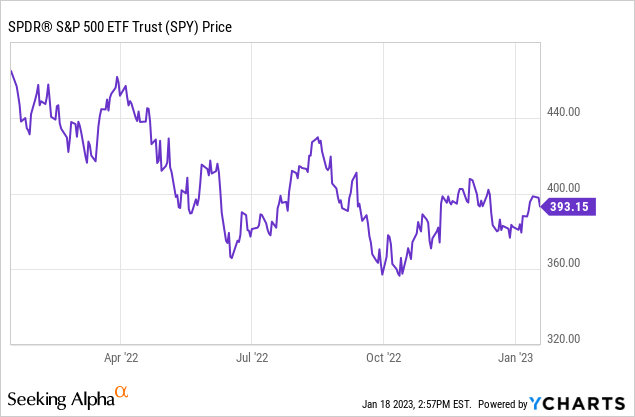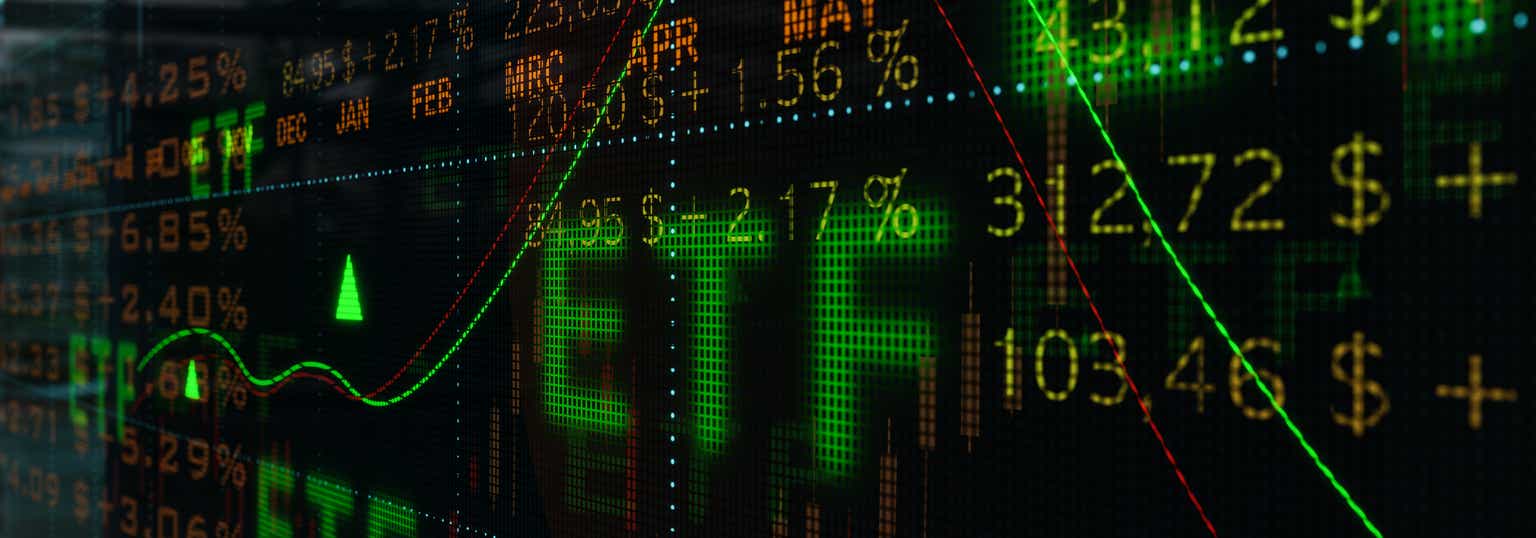[ad_1]
Torsten Asmus
Investing has become much more difficult over the last years. While the economy consistently grew at 2-3% a year from 2016 to 2019, and rates have remained low since 2008, with the Fed becoming more hawkish and inflation hurting most company’s earnings, the investing environment has become more challenging.
The S&P 500 (SPY) and most major indexes have been range bound over the last year, as rising rates and slowing growth has impacted earnings and valuations.
One type of fund that is not likely to be significantly impacted by slowing earnings is a covered call exchange traded fund such as the Global X Russell 2000 fund (NYSEARCA:RYLD). This particular fund is an income based ETF that owns the Russell 2000 by purchasing VTWO, and the managers then sell calls against the index. They use the income they get from the options sold to pay monthly distributions. The expense ratio is paid from the money the fund makes. This ETF pays monthly dividends, and the payouts have been consistent since the inception of this ETF in 2019. The monthly payouts have also continued to be impressive over the last 3 years.

With the recent sell-off, the market is now negative over the last year, and the investing environment remains challenging as rates continue to rise and growth slows.
The Fed clearly signaled in December that rates are likely to rise for some time, and rising costs and slowing growth continue to impact earnings as well. The dollar has also risen significantly against the Euro and most other major currencies over the last several years even with the recent pullback in the world’s reserve currency, and a rising dollar continues to have a significant impact on earnings as well. Geopolitical tensions remain high as well, with no sign that the Russian-Ukraine conflict will end anytime soon. Markets are likely to remain range bound for some time.
This is why covered call funds such as RYLD should be able to consistently and significantly outperform the S&P 500 and most major indexes for some time.
RYLD is a covered call ETF that is indexed to the Russell 2000. The fund buys the Russell 2000 by purchasing VTWO, the Vanguard ETF indexed to the Russell 2000. This fund has an expense ratio of .6% and 1.39 billion in assets under management. This ETF pays monthly distribution with the income from selling call options, so those payouts can vary significantly at times, though they have been consistent over the last 3 years.
The Global X Russell 2000 Fund is a good example of how selling covered calls can work to maximize income and total returns for investors. The holdings of this fund are 16.4% health care, 15.99% financial services, 14.83% industrials, 4.24% basic materials, 10.53% consumer cyclical, 7.65% real estate, 4.17% consumer defensives, 3.46% utilities, 6.53% energy, 2.42% communication services, and 13.79% technology.
The fund has a good mix of defensive and cyclical stocks, and even though this fund is not heavily overweight in defensive sectors, the fund has delivered steady income and total returns. This covered call fund has also offered better overall returns over the last 3 years than other covered call funds such as the XLYD (XLYD) and QLYD (QLYD) funds.
The key to a successful covered call fund is the implied volatility premiums in the options that are sold against the fund’s equity holdings. The higher these volatility premiums are, the more income these funds can offer to investors. Most investors also, however, want a balance between income and volatility levels in the underlying investments. The ideal environment for a covered call fund is when there is enough volatility to generate significant income from the options premiums, but not too much volatility to make capital preservation difficult.
This fund has consistently offered solid income without excessive volatility, and even with overall volatility levels likely to decline in the short-term from the recent very high levels, rising rates and slowing growth should still keep the markets volatile for some time.
RYLD’s monthly payments since 2019 have ranged from $.306 cents a share, to $.1366 cents a share, but the payouts have been higher over the last 3 years. The payments for this ETF have been very consistent over the last 3 though. From June of 2020 to December of 2023, monthly distributions have ranged from $.19 a month, to .$306 a month. The current dividend yield is 13.21%. Annual distribution levels are likely to remain over 10% though with volatility levels in the options this fund is selling likely to remain elevated for some time as economic challenges and geopolitical tensions remain high.
All investments have risks, and this fund has declined nearly 24% since its inception, but RYLD has still offered investors a positive return since that time when including income and looking at total returns. This fund also can be volatile at times, such as during the Pandemic, as well as recently when the market sold-off in the summer and fall. This is an investment that is best for individuals or institutions focused on income with at least a 2-3 year outlook.
Investing strategies have to evolve as market conditions change. Rates are now moving up and growth levels are likely to remain anemic and costs remain high. The dollar should also continue to be strong against most major currencies for some time as well with China still having issues with Covid and Europe dealing with an energy crisis. RYLD enables investors to get solid monthly income, and the fund has been less volatile than the major indexes and other covered call funds for several years. With markets likely to remain range bound and volatility levels likely to stay elevated, the Global X Russell 2000 Covered Call Fund should continue to outperform the major indexes in my view.
[ad_2]
Image and article originally from seekingalpha.com. Read the original article here.

